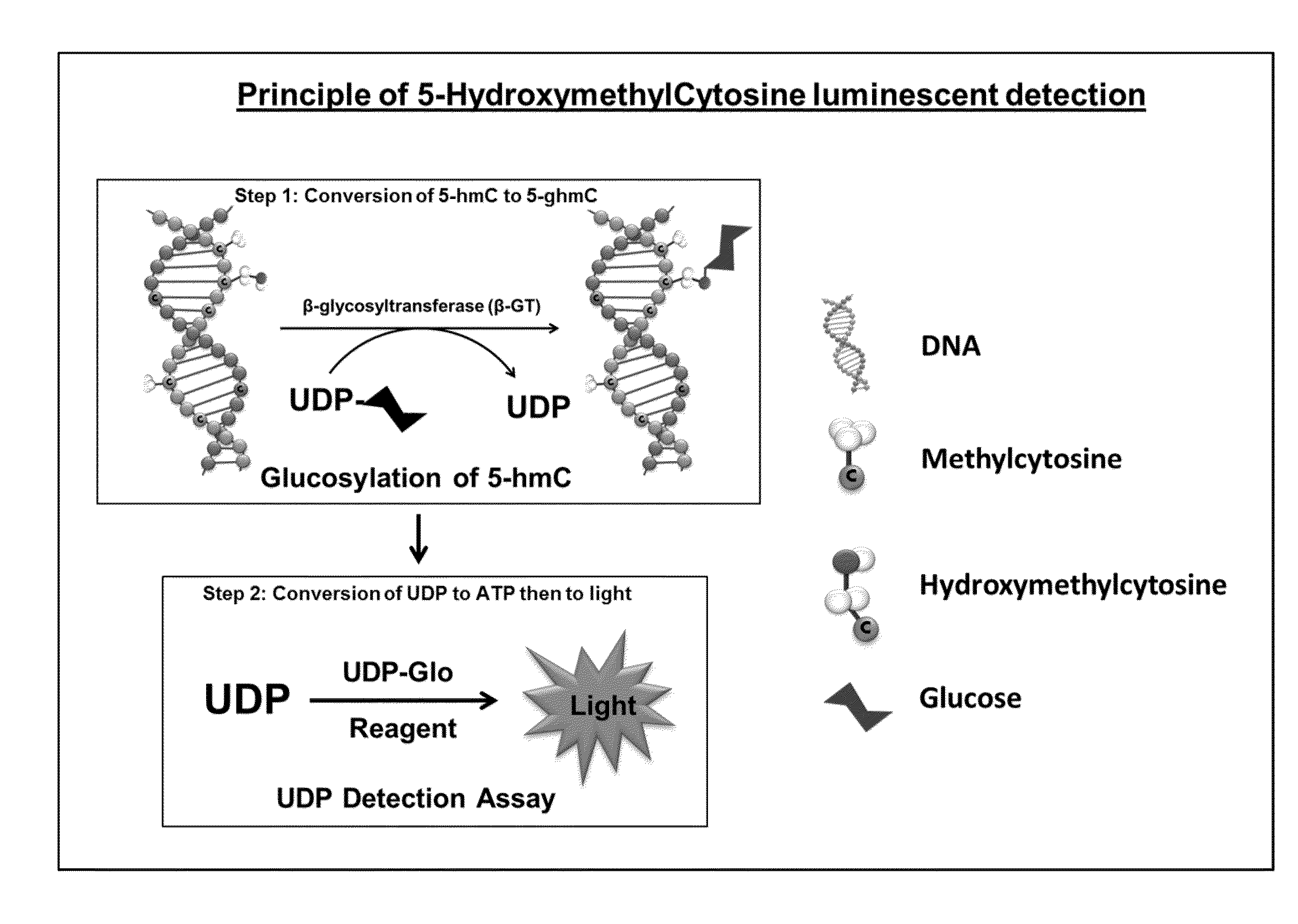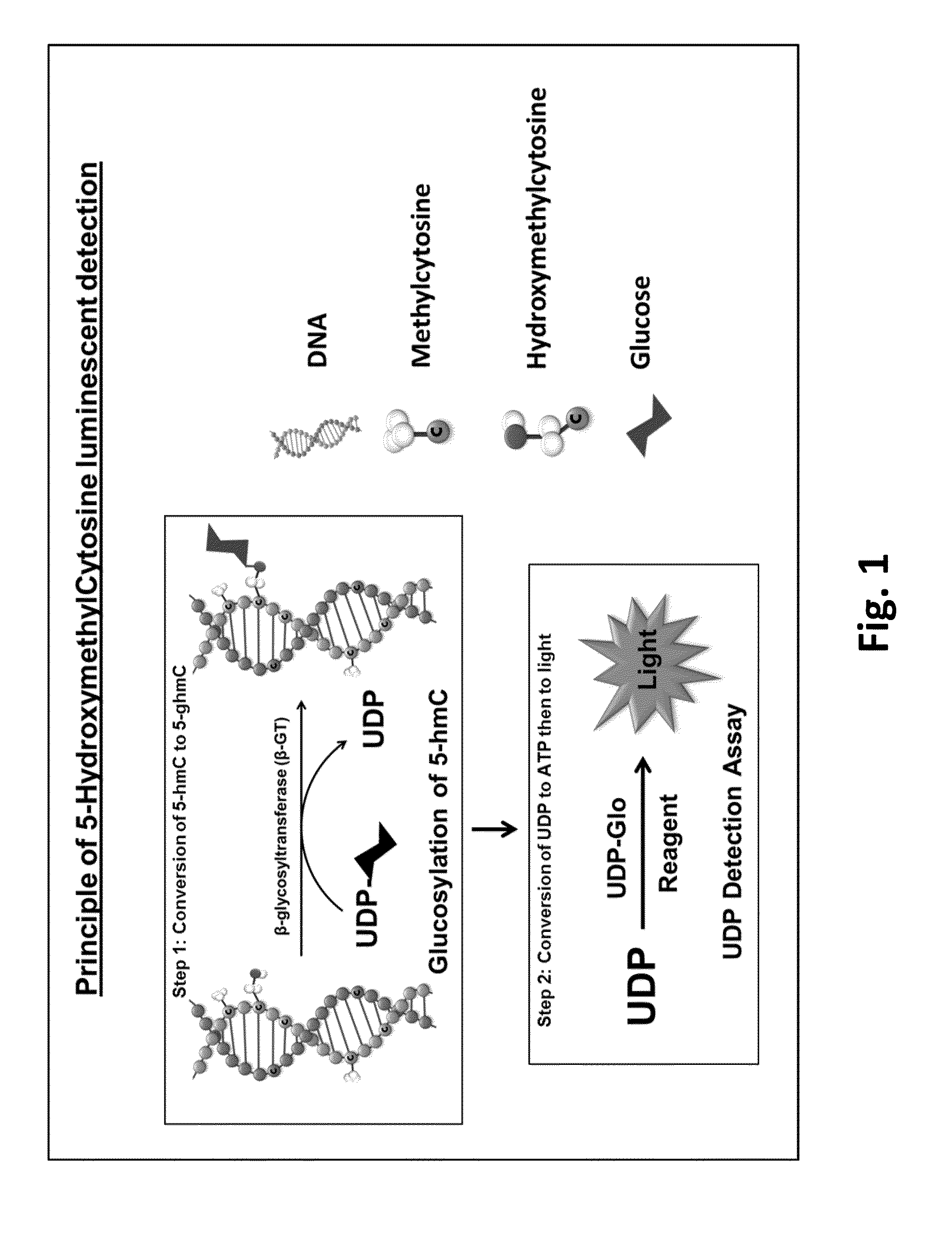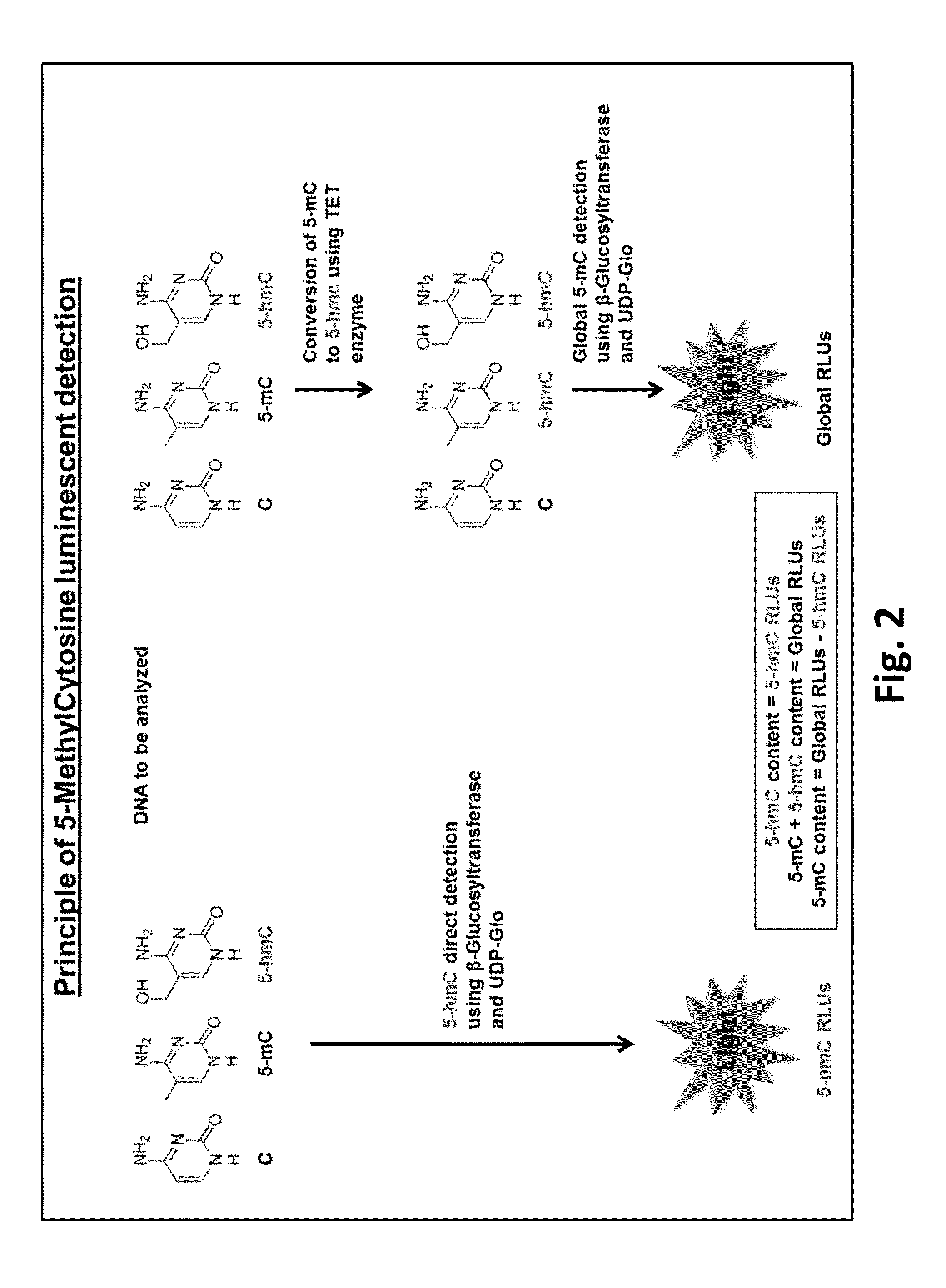Method for quantifying 5-hydroxymethylcytosine
a technology of cytosine and cytosine base, which is applied in the field of methods for detecting and quantifying cytosine bases, can solve the problems of cumbersome techniques and inability to accurately quantify the amount of cytosine bases
- Summary
- Abstract
- Description
- Claims
- Application Information
AI Technical Summary
Benefits of technology
Problems solved by technology
Method used
Image
Examples
example 1
Materials Relating to Examples 2-5
[0102]All DNA samples used in the below examples were purchased from Active Motif or ZYMO Research. T4 β-Glucosyltransferase was either purchased from ZYMO Research or recombinantly produced at Promega Corporation. The UDP Detection Reagent contains Promega Glo buffer with UDP converting enzyme (CMK) and luciferase / luciferin component. TET1 enzyme was purchased from Active Motif
example 2
Converting 5-hmC to Luminescence
[0103]DNA containing a known amount of cytosines was used in this experiment. DNA with all cytosines unmodified, methylated or hydroxymethylated were serially diluted in multi-well plates starting from 100 ng DNA in 25 μl of total reaction volume. Reactions were performed in GT Buffer (10 mM Tris pH 7.5, 10 mM NaCl, 10 mM MgCl2 and 1 mM DTT) containing 0.125 U β-GT and 50 mM UDP-glucose donor substrate. The glucosyltransferase reaction was performed at 37° C. for 1 hour. To detect the UDP produced, 25 μl of UDP Detection Reagent was added to convert UDP to ATP and then ATP to light. After an hour, the luminescence generated was measured on a luminometer.
[0104]As shown in FIG. 3, the 5-hmC detection signal was linear and proportional to the amount of 5-hmC in the sample. Only the 5-hmC containing DNA was able to be glucosylated by β-GT and hence generated UDP. The unmethylated and methylated cytosines could not be glucosylated by the glycosyltransferas...
example 3
Luminescence is Proportional to UDP and 5-hmC
[0106]UDP was titrated in 25 μl GT buffer to create a standard curve. 25 μl of UDP detection reagent was added, and after 1 hour at room temperature, luminescence was measured on a luminometer. Luminescence generated from 5-hmC conversion as described in Example 1 was converted to concentration of UDP formed based on the UDP standard curve.
[0107]FIG. 5 shows that luminescence is proportional to the UDP produced, and, by using the UDP standard curve, there is a positive correlation between the amount of 5-hmC DNA and the UDP produced by β-GT.
PUM
| Property | Measurement | Unit |
|---|---|---|
| molecular weight | aaaaa | aaaaa |
| molecular weights | aaaaa | aaaaa |
| molecular weights | aaaaa | aaaaa |
Abstract
Description
Claims
Application Information
 Login to View More
Login to View More - R&D
- Intellectual Property
- Life Sciences
- Materials
- Tech Scout
- Unparalleled Data Quality
- Higher Quality Content
- 60% Fewer Hallucinations
Browse by: Latest US Patents, China's latest patents, Technical Efficacy Thesaurus, Application Domain, Technology Topic, Popular Technical Reports.
© 2025 PatSnap. All rights reserved.Legal|Privacy policy|Modern Slavery Act Transparency Statement|Sitemap|About US| Contact US: help@patsnap.com



